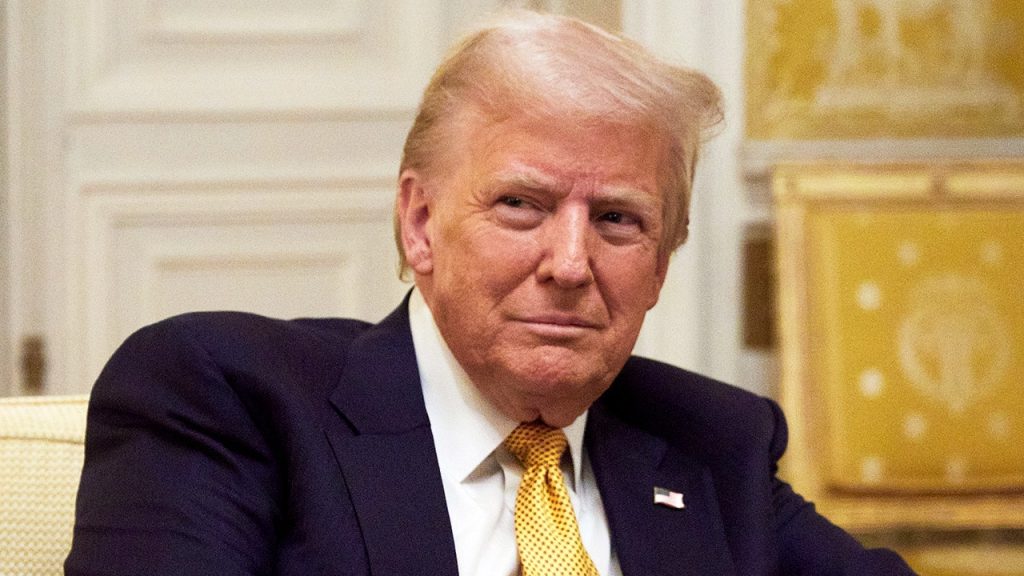Donald Trump’s recent resurgence of attacks against the media, branding them “corrupt,” has reignited a familiar pattern of legal offensives. Fresh off a $15 million settlement victory against ABC and George Stephanopoulos, Trump has launched new lawsuits against the Des Moines Register and pollster Ann Selzer, alleging “brazen election interference” due to a poll predicting his loss in Iowa, which he ultimately won by a significant margin. He’s also targeting CBS for a “60 Minutes” editing decision involving Kamala Harris. While legal experts suggest Trump’s chances of winning these lawsuits are slim, the primary objective appears to be burdening his perceived adversaries with the ordeal and expense of legal defense. This aggressive posture contradicts his recent claims of “taming” the press and receiving improved coverage, signaling a potential return to his combative relationship with the media.
Despite the renewed legal battles, Trump exhibited a more measured demeanor during a recent hour-long press conference. This shift, characterized by a slower, softer delivery and moderation of stances on divisive issues, reflects a deliberate attempt to project seriousness of purpose. He displayed a tactical approach to deflecting sensitive questions, acknowledged personal responsibility (“maybe it was my fault”), and conceded the difficulty of lowering grocery prices – demonstrating a willingness to temper the often-inflated rhetoric of his public persona. This measured approach extends to his handling of internal party dissent, carefully framing potential primary challenges against Republican senators opposing his nominees as a response to “unreasonable” or politically motivated opposition, while respecting legitimate disagreements.
This calculated moderation contrasts sharply with his fiery rhetoric on social media platforms, where he continues to launch personal attacks, as seen in his recent diatribe against Judge Juan Merchan. He accuses Merchan of corruption, bias, and disrespecting the Supreme Court in upholding the hush-money conviction, labeling the case a “rigged hoax.” This duality in his public presentation underscores the strategic nature of his communication: a measured, seemingly conciliatory approach in formal settings juxtaposed with unrestrained attacks on perceived enemies in the less formal realm of social media.
Trump’s interaction with Silicon Valley executives further highlights this strategic calibration. While acknowledging their past hostility, he emphasizes a shift in their attitude, attributing it to either his changed personality or their desire for connection now that he’s back in power. He even notes their financial contributions to his inauguration, suggesting a pragmatic recognition of the benefits of maintaining relationships with these powerful figures. This pragmatic approach extends to his broader media engagement, demonstrating an awareness of their influence and a willingness to engage, even with those he dislikes. His recent press conference showcased a return to his previous role as a constant source of news, weighing in on a wide range of topics from the Duke lacrosse case to the Biden administration’s handling of drone strikes and international affairs. This active engagement with the media contrasts sharply with the relative silence of his predecessor, highlighting Trump’s understanding of the media landscape and his ability to command attention.
However, the veneer of moderation occasionally cracks, revealing the familiar combative Trump. His attacks on the “corrupt media” and the lawsuits against news organizations illustrate a persistent antagonism that lies beneath the surface. This duality creates a complex and often contradictory public image, oscillating between measured statesman and aggressive fighter. While the moderated tone in some settings suggests a strategic awareness of the need to project a more presidential image, the underlying combativeness remains, readily surfacing when challenged or provoked.
Ultimately, the question remains: is this a genuine evolution in Trump’s approach, or a calculated strategy to navigate the political landscape? The carefully crafted public appearances suggest a deliberate attempt to project a more measured and presidential image, recognizing the need to broaden his appeal and maintain political relevance. However, the continued attacks on perceived enemies and the legal battles against media organizations indicate a persistent combativeness that may ultimately define his legacy. The interplay between these contrasting facets of his public persona creates a dynamic and unpredictable political figure, one who understands the power of media manipulation and utilizes it to both charm and attack, often simultaneously.

